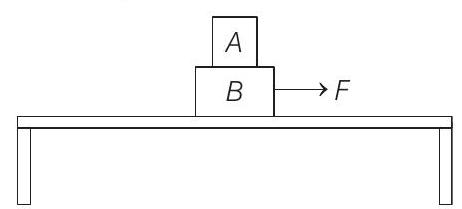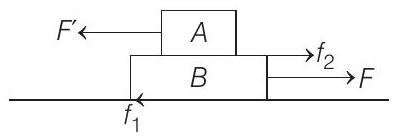Laws of Motion 3 Question 1
1. Two blocks
 horizontally, so that the block
horizontally, so that the block
[Take,
(2019 Main, 10 April II)
(a)
(b)
(c)
(d)
Objective Question II (One or more correct option)
Show Answer
Answer:
Correct Answer: 1. (b)
Solution:
- Acceleration
where,
So,
Here,
Substituting the above values in Eq. (i), we have
Due to acceleration of block

This force
where,
For
We consider limiting case,
Putting the value of






